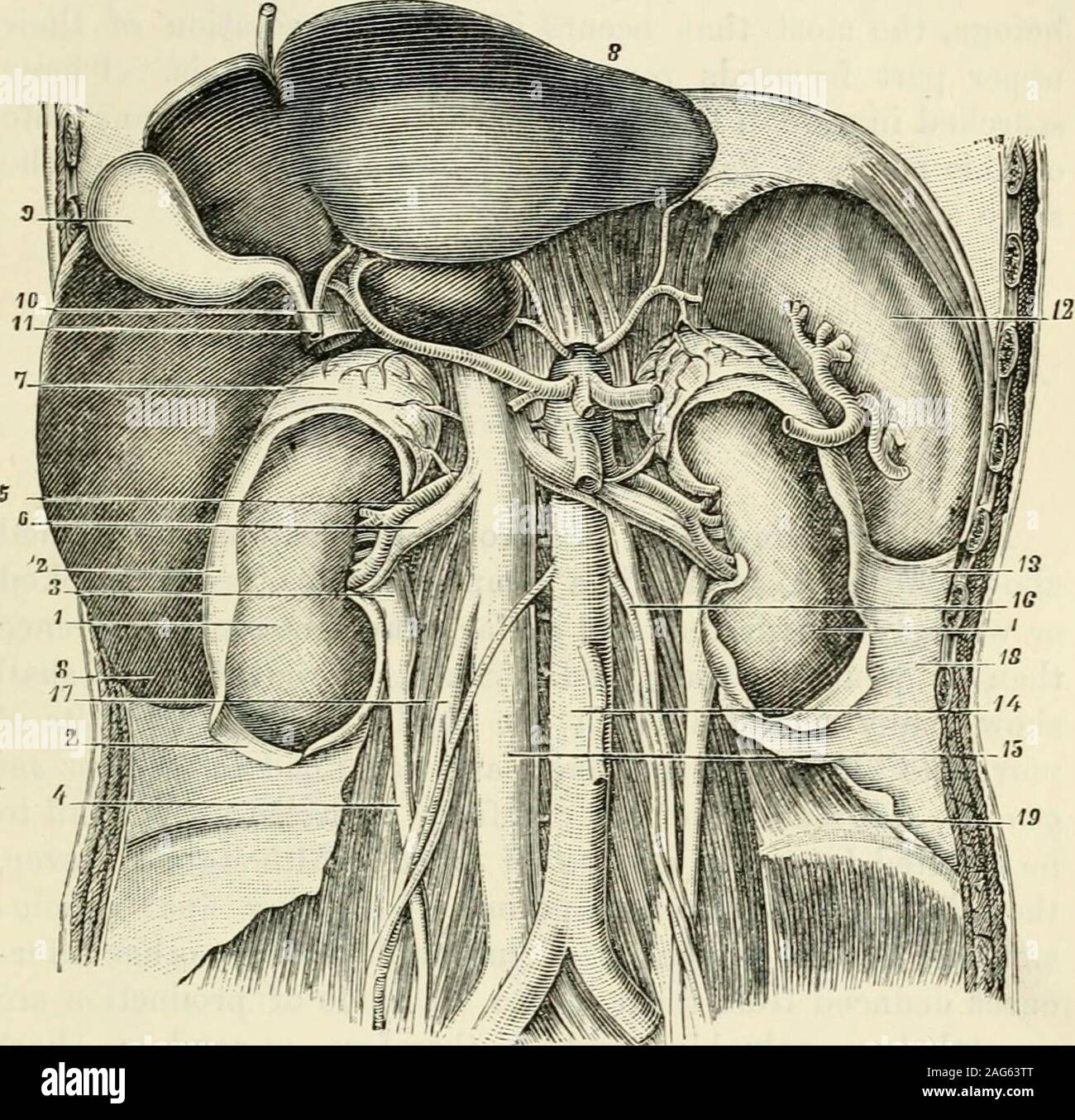. Selected monographs, comprising Albuminuria in health and disease. o j^liysicalconditions which oppose the descent of the kidneys, especiallythe adsijiratory force of tlie diapJiragm and the intra-ahdominalpressure produced by the normal act of straining. If one ofthese factors is eliminated in experiments on the dead subjectas may be done by opening the abdominal cavity or removingthe diaphragm, the kidney is seen almost invariably to sinkslightly by virtue of its weight. In spite of this, the anato-mical fastenings are so strong, that Sappey found as a resultof 24 experiments in which the

Image details
Contributor:
The Reading Room / Alamy Stock PhotoImage ID:
2AG63TTFile size:
7.1 MB (571 KB Compressed download)Releases:
Model - no | Property - noDo I need a release?Dimensions:
1602 x 1559 px | 27.1 x 26.4 cm | 10.7 x 10.4 inches | 150dpiMore information:
This image is a public domain image, which means either that copyright has expired in the image or the copyright holder has waived their copyright. Alamy charges you a fee for access to the high resolution copy of the image.
This image could have imperfections as it’s either historical or reportage.
. Selected monographs, comprising Albuminuria in health and disease. o j^liysicalconditions which oppose the descent of the kidneys, especiallythe adsijiratory force of tlie diapJiragm and the intra-ahdominalpressure produced by the normal act of straining. If one ofthese factors is eliminated in experiments on the dead subjectas may be done by opening the abdominal cavity or removingthe diaphragm, the kidney is seen almost invariably to sinkslightly by virtue of its weight. In spite of this, the anato-mical fastenings are so strong, that Sappey found as a resultof 24 experiments in which the cadaver was raised upiight, that the kidneys remained immoveable in 21, and in3 only sank2 centimetres. Though the descent of the kidneys is ascribedby Sappey in these experiments solely to their weight, it * Incorrectly quoted by Landau. MOVEABLE KTDXET IN WOMEN. 243 must uot he forgotten that their weiglit cannot come intooperation until tlie abdominal pressure is eliminated bjopening the abdominal cavity and removing the abdominalviscera. Fig. 2 {nfter Sa-ppey).. 3-4-5-6. 7-8, 9 10. II. 12, 1. The two kidneys. 2. Capsulii fibrosii, by which theyare fixed to the posterior wall ofthe abdomen. Pelvis of tlie kidney. Ureter. Renal artery. Itenal vein. Su]irareiial body. 8. The liver, raised, in order toshow the relations of its lowersurface to the right kiduev. Gall-bladder. Terminal portion of the portalvein. Origin of the common bile-dnct. The spleen, turned outwards, in order to show the relations ofits inner surface to the leftkidney.1.1. Semicircular pouch on which thelower end of the spleen rests. 14. Abdominal aorta. 15. Vena cava inferior. 16. Left spermatic artery and vein. 17. Plight spermatic vein opening into the vena cava inferior. 18. Subperitoneal fibrous layer or fascia propria, dividing at theconvex border of the kidneysinto two folds, to form theirsheath. 19. Lower end of the quadratus lum- borum muscle. 244 MOVEABLE KIDNEY IN WOMEN. Thus during life tlie kidney